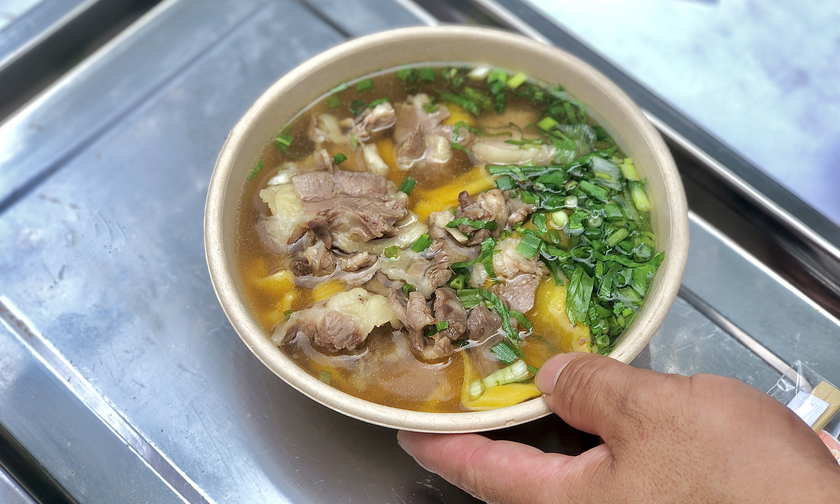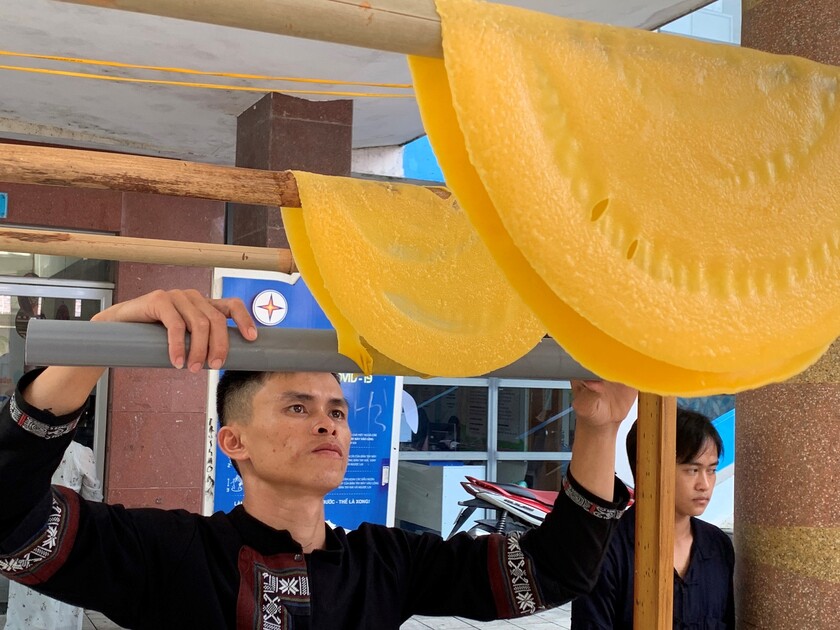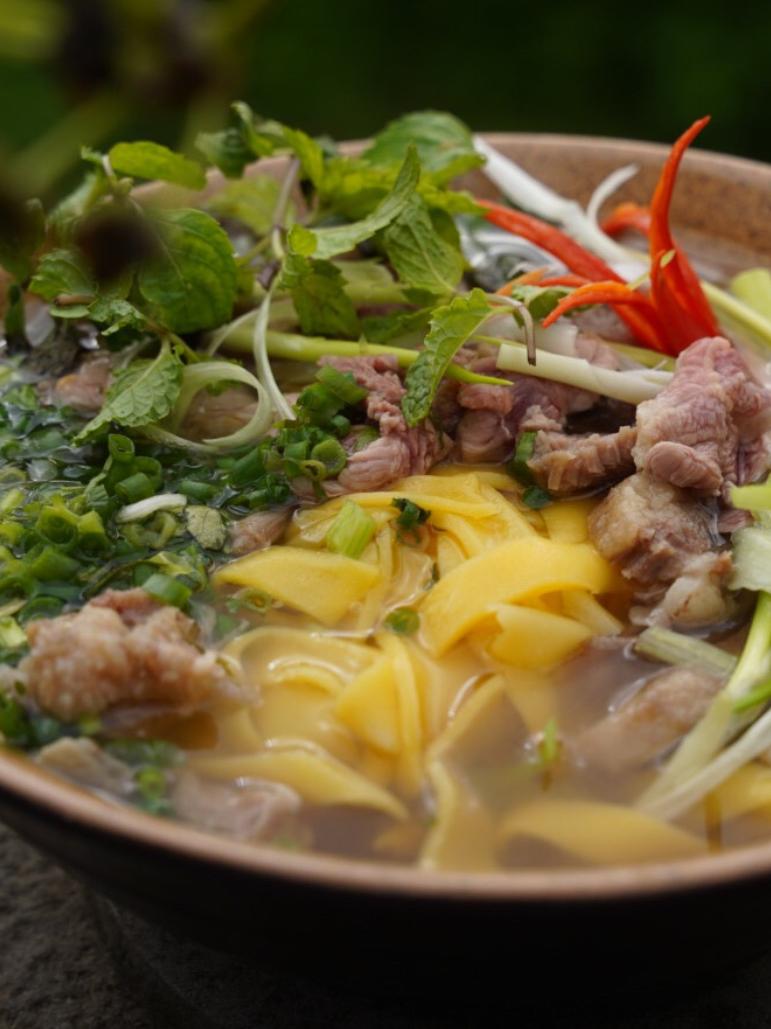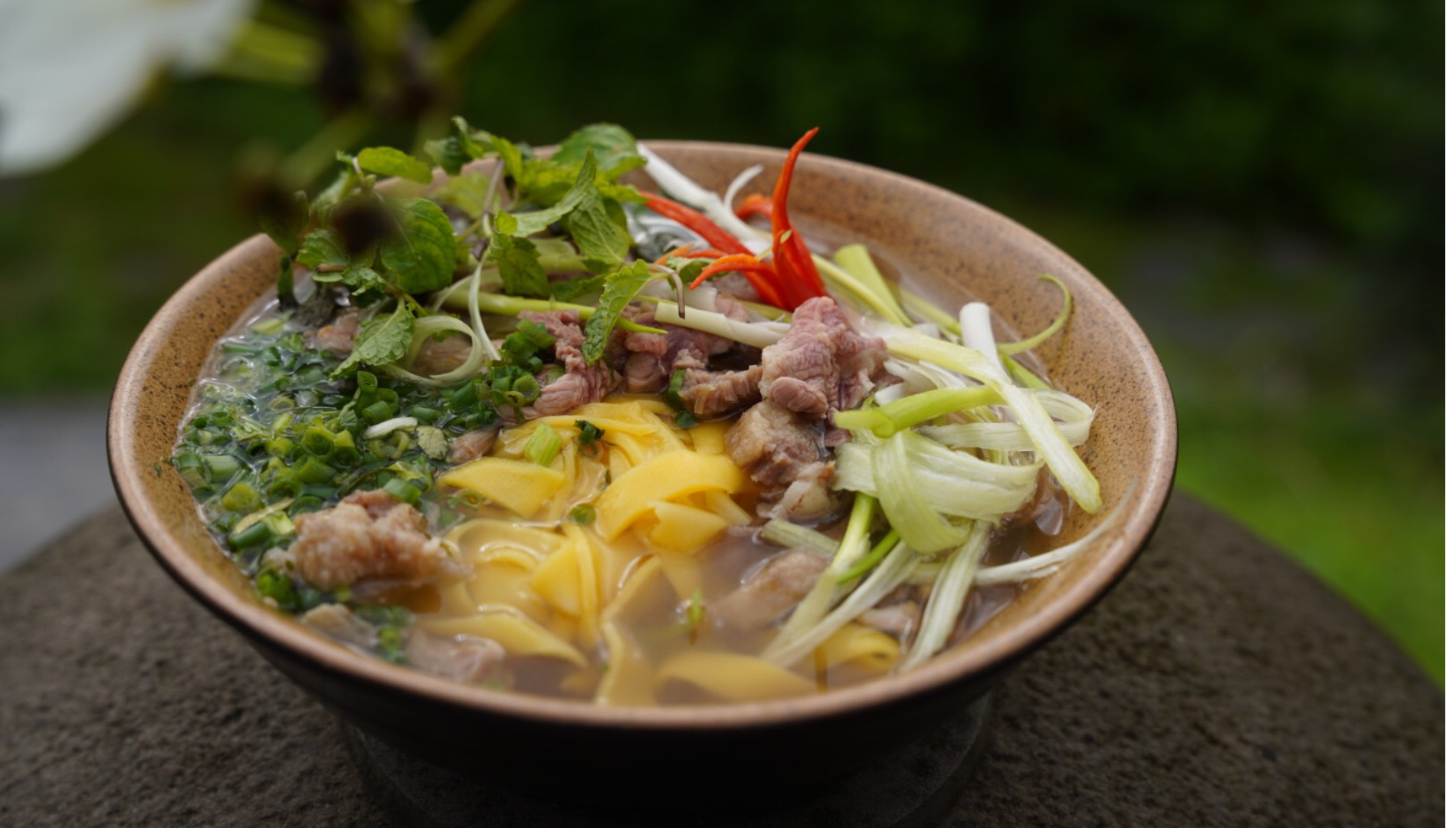Along with the rich culinary culture of the ethnic groups in Ha Giang, corn pho with its eye-catching appearance and delicious flavor has truly captured the hearts of many tourists when coming to the Ha Giang Stone Plateau.
Corn is the staple food of the Mong people in the Ha Giang rocky plateau. Local people have processed corn into many different dishes such as corn rice, corn sticky rice, corn pho.
Creativity of the people of the rocky plateau
Pho Ngo is a combination of the typical culinary features of the Mong people and pho broth, a dish known as the national soul of Vietnam. The combination of lowland pho cooking methods with ingredients from the rocky plateau helps Ha Giang corn pho enter the list of 121 typical Vietnamese culinary dishes in 2022. In the list voted by VCCA, Ha Giang also has two other dishes: ca gio and chao au tau.

Unique new dishes attract tourists when coming to Ha Giang
Corn Pho uses local ingredients combined with the recipe of lowland pho broth but with some changes to create harmony. Corn in the rocky plateau of Ha Giang is grown entirely in the crevices of rocks, growing and developing in harsh climate conditions, so the corn here has a strong flavor and characteristic aroma. The flavor of corn in each noodle blends with the flavor of the Northwest mountains and forests to give visitors a unique and impressive pho dish.
Golden pho noodles are made from corn kernels, served with pho broth to create a unique dish typical of the Ha Giang highlands.

After being coated, the rice noodles have an attractive deep yellow color.

Making corn pho is a very complicated process. The step of choosing the corn must be small, short, contain a lot of starch and have a pleasant sweet aroma. To make golden pho noodles, the corn kernels need to be separated from the cob, dried, crushed, cleaned and soaked for at least 8 hours so that the corn can expand and be easily ground into flour, then mixed with water. To make the finished pho noodles, the cook uses a ladle to scoop the flour onto the steamer, then wait for them to cook for 2-3 minutes until the flour is cooked evenly and can be taken out.
Corn noodles are hand-made like traditional noodles, but corn is less sticky than rice, so the technique is more difficult. When cooked, the noodles turn a deep golden color.

Cut the rice noodles into bite-sized pieces.
When the pho noodles are cool, they will be folded into rectangular pieces and sliced so that the noodles do not break or break. The “soul” of the pho dish lies in the broth. The broth is simmered from beef for many hours, adding a few vegetables from the rocky plateau, adding cinnamon and star anise, blending together to make diners remember for a long time when enjoying it, because of the difference in flavor of this special dish.

Ha Giang currently has no official corn pho establishment. Diners can enjoy free corn pho for breakfast at the resort in Trang Kim village, famous for its hand-painted pho in Dong Ha commune, Quan Ba district.

Rich flavor of the rocky plateau
Corn Pho brings new colors and flavors to the Vietnamese Pho collection. Making corn Pho also helps increase the value of corn, contributing to increasing income for people in the highlands.




































